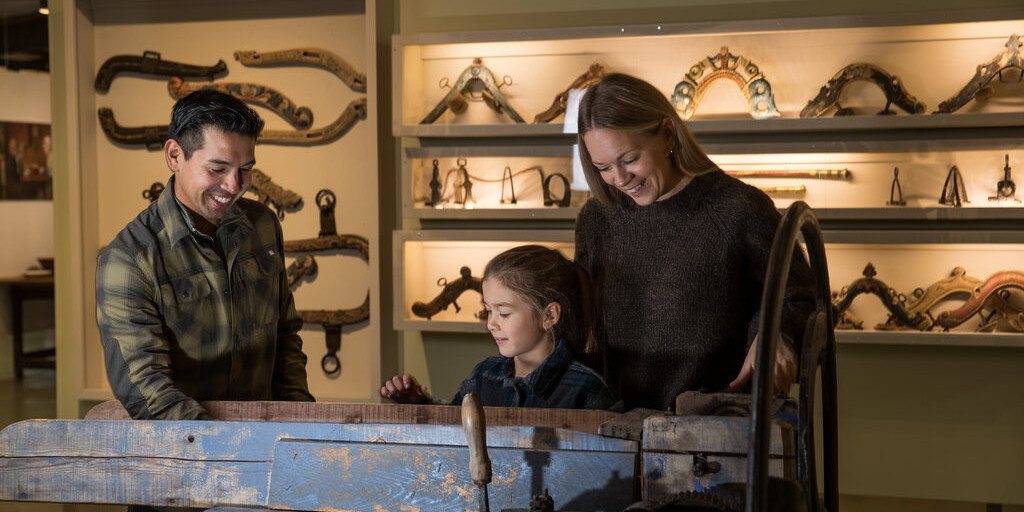Give us this day our daily bread, says the Our Father prayer. And our ancestors were indeed forced to spend a lot of time and effort feeding themselves and their families. In ancient times, through hunting, trapping, fishing and gathering. Then, in the Early Stone Age, also through agriculture. This forced people to settle, and the Norwegian word for farmer, bonde, comes from the word bùandi, meaning settled. The soil provided sustenance for people and animals, and agriculture was called the Maternal Craft.
The exhibition shows tools and equipment from traditional rural agriculture, at a time when everyone – men and women, children and grandparents – had to contribute to this crucial work. These are simple but highly durable and functional tools. Many of them remained unaltered from the Viking Age right into the late 1800s. We follow food production in the old subsistence households, theme by theme: From growing grains, potatoes and fruit, frugality and animal husbandry, dairy and shielings, hunting and gathering – to the daily tasks required to put food on the table.
The exhibition also aims to challenge you: How much time, money and effort do YOU spend on food? Who produces it, and how far away? How is food distributed worldwide? Or water? Why do we discard mountains worth of food in a world where so many are starving? And how will Mother Earth provide enough food for everyone in the future?
Utstillinga vil også utfordra: Kor mykje tid, krefter og pengar brukar DU på å skaffa deg dagleg brød? Kven produserer maten din, og kor langt blir han frakta? Korleis fordeler vi maten på jorda? Eller vatnet? Kvifor kastar vi berg av mat, i ei verd der mange svelt? Og korleis kan Moder Jord i framtida sikra mat nok til alle.
Photo: Visitors at the Agricultural Exhibition. Credit: Thomas Bickhardt/BickFoto.
